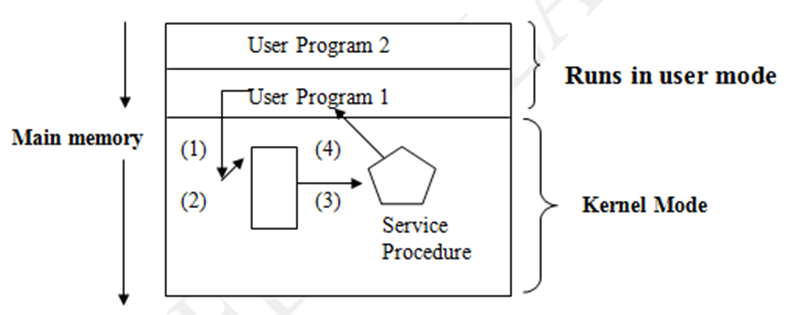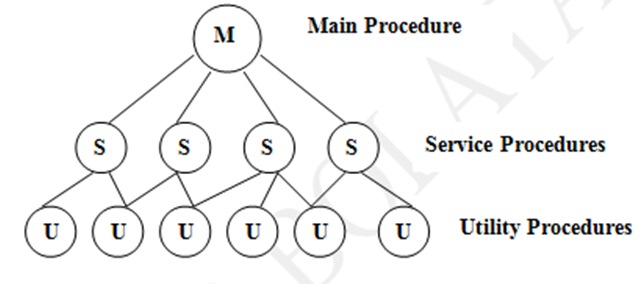- Monolithic system Structure is written as a collection of procedures, each of which can call any other procedure whenever it needs. When this technique is used each procedure in the system has a well-defined interface in terms of parameters and results.
- In this system the information-hiding feature is not available. Every procedure is feasible to every another procedure. The system calls provided by the operating system are requested by putting the parameters in registers or on the stack and then executes a special trap instruction known as Kernel call or Supervisor call. The instruction switches the matching from user task to kernel mode (event 1). Most CPU operates in two modes:
-
Kernel Mode:
A kernel is a collection of programs. It performs control functions by executing instructions on the CPU. All system calls and program instructions are executed in the kernel mode only.
-
User mode:
All user program or applications run in this mode. It accepts user commands in this mode and executes them in kernel mode.
- In User mode, all the user programs run. Input/Output and certain other instruction are not allowed it runs in kernel mode only.
- The operating system examining the parameter of the call to determine which system call is to be carried out (Event 2).
- The operating system indexes that system call from a table, which is called dispatch table (Event 3).
- The actual event is now running (Event 4).
- After executing that systems call it return back to the user program (user mode) (Event 5).
- The organization of monolithic structure is as follow:
- A main procedure that invokes the requested service procedure.
- The set of service procedure that carried out the system call.
- The set of utility procedure that help the service procedure.


